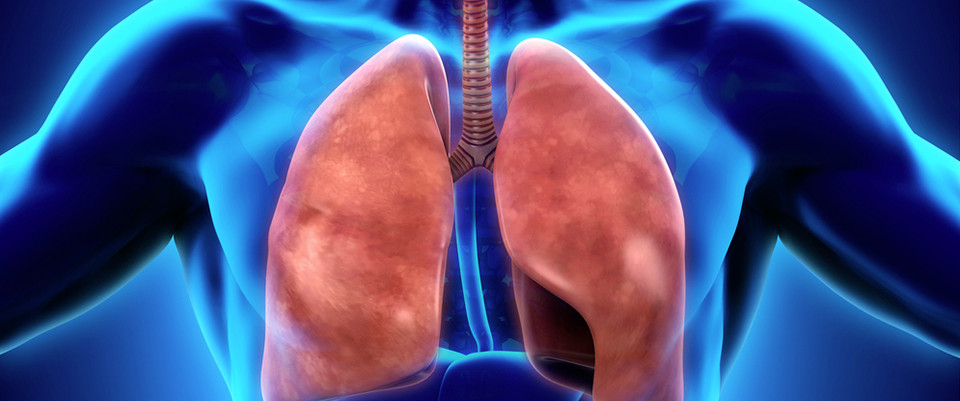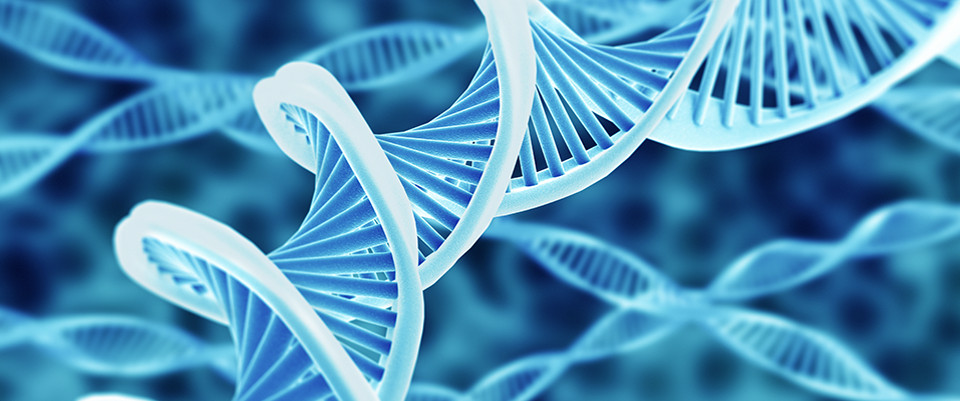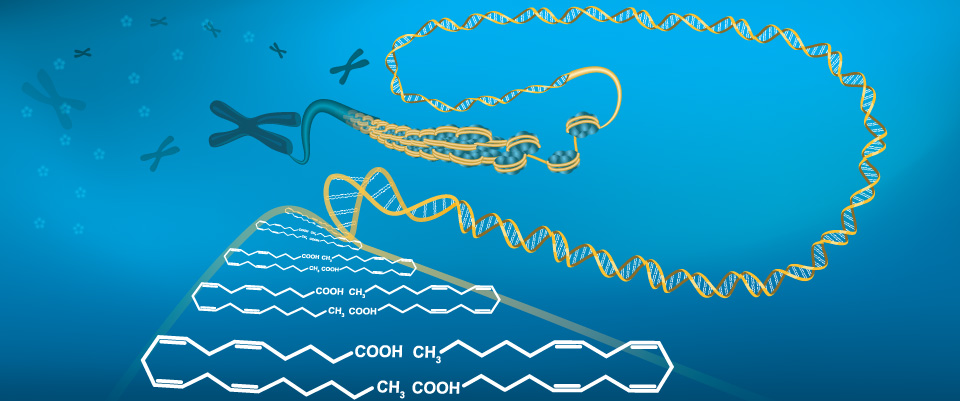PubMed
The effects of excess salt intake on the kidney metabolism in Sprague-Dawley rats
bioRxiv. 2023 Jan 20:2023.01.18.524636. doi: 10.1101/2023.01.18.524636. Preprint.ABSTRACTIn the present study, novel methods were developed which allowed continuous (24/7) measurement of blood pressure (BP) and renal blood flow (RBF) in freely moving rats and the intermittent collection of arterial and renal venous blood to estimate kidney metabolic fluxes of O 2 and metabolites. The study determined the effects of a high salt (HS) diet upon whole kidney O 2 consumption and the metabolomic profiles of normal Sprague Dawley (SD) rats. A separate group of rats was studied to determine changes in the cortex (Cx) and outer medulla (OM) tissue metabolomic and mRNAseq profiles before and following the switch from a 0.4% to a 4.0% NaCl diet. Significant changes in the metabolomic and transcriptomic profiles occurred with feeding of the HS diet. A progressive increase of kidney O 2 consumption was found despite a reduction in expression of most of the mRNA encoding enzymes of TCA cycle. Increased glycolysis was evident with the elevation of mRNA expression encoding key glycolytic enzymes and release of pyruvate and lactate from the kidney in the renal venous blood. Glycolytic production of NADH is used in either the production of lactate or oxidized via the malate aspartate shuttle. Aerobic glycolysis (e.g., Warburg-effect) may account for the needed increase in cellular energy. The study provides interesting and provocative new data of how normal kidneys respond to a HS diet and guides us toward deeper mechanistic studies examining the effects of a HS diet upon kidney metabolism.PMID:36711564 | PMC:PMC9882299 | DOI:10.1101/2023.01.18.524636
Pre- and Post-Portosystemic Shunt Placement Metabolomics Reveal Molecular Signatures for the Development of Hepatic Encephalopathy
medRxiv. 2023 Jan 4:2023.01.02.22281374. doi: 10.1101/2023.01.02.22281374. Preprint.ABSTRACTHepatic encephalopathy (HE) is a common complication of advanced liver disease causing brain dysfunction. This is likely due to the accumulation of unfiltered toxins within the bloodstream. A known risk factor for developing or worsening HE is the placement of a transjugular intrahepatic portosystemic shunt (TIPS), which connects the pre-hepatic and post-hepatic circulation allowing some blood to bypass the dysfunctional liver and decreases portal hypertension. To better understand the pathophysiology of post-TIPS HE, we conducted a multi-center prospective cohort study employing metabolomic analyses on hepatic vein and peripheral vein blood samples from participants with cirrhosis undergoing elective TIPS placement, measuring chemical modifications and changes in concentrations of metabolites resulting from TIPS placement. In doing so, we identified numerous alterations in metabolites, including bile acids, glycerophosphocholines, and bilirubins possibly implicated in the development and severity of HE.PMID:36711444 | PMC:PMC9882439 | DOI:10.1101/2023.01.02.22281374
A time differentiated dietary intervention effect on the biomarkers of exposure to pyrethroids and neonicotinoids pesticides
iScience. 2022 Dec 22;26(2):105847. doi: 10.1016/j.isci.2022.105847. eCollection 2023 Feb 17.ABSTRACTTailoring medical models to the right person or risk subgroups delivered at the right time is important in personalized medicine/prevention initiatives. The CIRCA-CHEM randomized 2x2 crossover pilot trial investigated whether the consumption of fruits/vegetables within a time-restricted daily window would affect urinary biomarkers of exposure to neonicotinoids (6-chloronicotinic acid, 6-CN) and pyrethroids (3-phenoxybenzoic acid, 3-PBA) pesticides, a biomarker of oxidative damage (4-hydroxynonenal, 4-HNE) and the associated urinary NMR metabolome. A statistically significant difference (p < 0.001) in both creatinine-adjusted 6-CN and 3-PBA levels was observed between the two-time dietary intervention windows (morning vs. evening). In the evening intervention period, pesticides biomarker levels were higher compared to the baseline, whereas in the morning period, pesticide levels remained unchanged. Positive associations were observed between pesticides and 4-HNE suggesting a diurnal chrono-window of pesticide toxicity. The discovery of a chronotoxicity window associated with chrono-disrupted metabolism of food contaminants may find use in personalized medicine initiatives.PMID:36711241 | PMC:PMC9874006 | DOI:10.1016/j.isci.2022.105847
Acrolein-inducing ferroptosis contributes to impaired peripheral neurogenesis in zebrafish
Front Neurosci. 2023 Jan 12;16:1044213. doi: 10.3389/fnins.2022.1044213. eCollection 2022.ABSTRACTINTRODUCTION: Diabetes mellitus (DM) is associated with physiological disorders such as delayed wound healing, diabetic retinopathy, diabetic nephropathy, and diabetic peripheral neuropathy (DPN). Over 50% of diabetic patients will develop DPN, characterized by motor dysfunction and impaired sensory nerve function. In a previous study, we have uncovered acrolein (ACR) as an upstream initiator which induced impaired glucose homeostasis and microvascular alterations in zebrafish. Whether ACR has specific effects on peripheral neurogenesis and mediates DPN, is still waiting for clarification.METHODS: To evaluate the function of ACR in peripheral nerve development, in vivo experiments were performed in Tg(hb9:GFP) zebrafish. In addition, a series of rescue experiments, metabolomics assessment, and bioinformatics analysis was performed aimed at identifying the molecular mechanisms behind ACR's function and impaired neurogenesis.RESULTS: Impaired motor neuron development was confirmed in wild-type embryos treated with external ACR. ACR treated embryos displayed ferroptosis and reduction of several amino acids and increased glutathione (GSH). Furthermore, ferroptosis inducer caused similarly suppressed neurogenesis in zebrafish embryos, while anti-ACR treatment or ferroptosis inhibitor could successfully reverse the detrimental phenotypes of ACR on neurogenesis in zebrafish.DISCUSSION: Our data indicate that ACR could directly activate ferroptosis and impairs peripheral neurogenesis. The data strongly suggest ACR and activated ferroptosis as inducers and promising therapeutic targets for future DPN studies.PMID:36711148 | PMC:PMC9877442 | DOI:10.3389/fnins.2022.1044213
The Role of Purine Metabolism-Related Genes PPAT and IMPDH1 in the Carcinogenesis of Intrahepatic Cholangiocarcinoma Based on Metabonomic and Bioinformatic Analyses
J Oncol. 2023 Jan 20;2023:5141836. doi: 10.1155/2023/5141836. eCollection 2023.ABSTRACTIn this study, we investigated the role of tumor microenvironment and serum differential metabolites in intrahepatic cholangiocarcinoma (ICC) carcinogenesis, providing new evidence for ICC treatment. Serum samples from healthy individuals and ICC patients were collected for metabolomic analysis. The purine metabolites such as inosine, guanosine, hypoxanthine, and xanthine were increased in patient serum. TCGA database samples were collected, and the correlation between purine metabolism-related genes and ICC clinical features was analyzed using R language to obtain the differential genes including PPAT, PFAS, ATIC, and IMPDH2. High PPAT expression was associated with poor ICC prognosis. A PPAT silencing model in HCCC-9810 cells was constructed. The cell phenotype was examined by qRT-PCR, CCK-8, transwell, and flow cytometry, showing a decrease in IMPDH1 expression, colony and invasive cells numbers, and an increase in apoptosis. Guanosine reversed IMPDH1 expression in HCCC-9810 cells, promoting the secretion of inflammatory factors IL-6, IL-8, OPN, VEGF, and VCAM-1 and intensifying epithelial-mesenchymal transition (EMT) progression in the cells. In nude mice, the IMPDH1 inhibitory drug MMF inhibited tumor growth and reduced the expression of tumor stem cell characteristic markers CD133 and SOX2. Guanosine accelerated the malignant progression of ICC inhibition of purine metabolism-related genes, PPAT and IMPDH2, suppressed the malignant phenotype in HCCC-9810 cells, and inhibited tumor growth.PMID:36711025 | PMC:PMC9883099 | DOI:10.1155/2023/5141836
Combined microbiome and metabolome analysis of gut microbiota and metabolite interactions in chronic spontaneous urticaria
Front Cell Infect Microbiol. 2023 Jan 11;12:1094737. doi: 10.3389/fcimb.2022.1094737. eCollection 2022.ABSTRACTBACKGROUND: The pathogenesis of chronic spontaneous urticaria (CSU) is unclear, and it turned out to be involved in biological processes, such as autoimmunity, autoallergy, inflammation, and coagulation. The gut microbiota plays an important role in immune and inflammatory diseases. However, the relationship between chronic spontaneous urticaria and the gut microbiota remains unknown.METHODS: The stool and serum samples were taken from 15 CSU patients and 15 normal controls. Changes in the composition of gut microbiota and serum metabolism in CSU patients and normal controls were analyzed by 16S ribosomal RNA (rRNA) gene sequencing and untargeted metabolomics.RESULTS: The results of 16S rRNA gene sequencing showed that compared with normal controls, CSU patients had increased α-diversity of gut microbiota and significant differences in β-diversity. At the phylum level, the relative abundance of Firmicutes increased and the relative abundance of Bacteroidetes and Proteobacteria decreased in CSU patients compared with healthy controls. At the genus level, six kinds of bacteria were significantly enriched in CSU patients and five in normal controls. Metabolomic analysis revealed altered levels of metabolites such as unsaturated fatty acids and purines. Correlation analysis of gut microbiota and metabolites showed that Lachnospira was negatively correlated with arachidonic acid, and Gemmiger was also negatively correlated with (±)8-HETE.CONCLUSION: This study suggests that changes in gut microbiota and metabolites may play a role in immune and inflammatory pathways in the pathogenesis of CSU patients.PMID:36710970 | PMC:PMC9874702 | DOI:10.3389/fcimb.2022.1094737
Malaria disrupts the rhesus macaque gut microbiome
Front Cell Infect Microbiol. 2023 Jan 13;12:1058926. doi: 10.3389/fcimb.2022.1058926. eCollection 2022.ABSTRACTPrevious studies have suggested that a relationship exists between severity and transmissibility of malaria and variations in the gut microbiome, yet only limited information exists on the temporal dynamics of the gut microbial community during a malarial infection. Here, using a rhesus macaque model of relapsing malaria, we investigate how malaria affects the gut microbiome. In this study, we performed 16S sequencing on DNA isolated from rectal swabs of rhesus macaques over the course of an experimental malarial infection with Plasmodium cynomolgi and analyzed gut bacterial taxa abundance across primary and relapsing infections. We also performed metabolomics on blood plasma from the animals at the same timepoints and investigated changes in metabolic pathways over time. Members of Proteobacteria (family Helicobacteraceae) increased dramatically in relative abundance in the animal's gut microbiome during peak infection while Firmicutes (family Lactobacillaceae and Ruminococcaceae), Bacteroidetes (family Prevotellaceae) and Spirochaetes amongst others decreased compared to baseline levels. Alpha diversity metrics indicated decreased microbiome diversity at the peak of parasitemia, followed by restoration of diversity post-treatment. Comparison with healthy subjects suggested that the rectal microbiome during acute malaria is enriched with commensal bacteria typically found in the healthy animal's mucosa. Significant changes in the tryptophan-kynurenine immunomodulatory pathway were detected at peak infection with P. cynomolgi, a finding that has been described previously in the context of P. vivax infections in humans. During relapses, which have been shown to be associated with less inflammation and clinical severity, we observed minimal disruption to the gut microbiome, despite parasites being present. Altogether, these data suggest that the metabolic shift occurring during acute infection is associated with a concomitant shift in the gut microbiome, which is reversed post-treatment.PMID:36710962 | PMC:PMC9880479 | DOI:10.3389/fcimb.2022.1058926
Metabolomics of small extracellular vesicles derived from isocitrate dehydrogenase 1-mutant HCT116 cells collected by semi-automated size exclusion chromatography
Front Mol Biosci. 2023 Jan 11;9:1049402. doi: 10.3389/fmolb.2022.1049402. eCollection 2022.ABSTRACTCancer-derived small extracellular vesicles (sEVs) are multifunctional particles with a lipid bilayer structure that are involved in cancer progression, such as malignant proliferation, distant metastasis, and cancer immunity evasion. The separation protocol used to isolate sEVs is an important process and thus, several have been developed, including ultracentrifugation (UC), size exclusion chromatography (SEC), and affinity purification using antibodies against sEV surface antigens. However, the effects of different separation methods on sEV components have not been adequately examined. Here, we developed a semi-automated system for collecting sEVs by combining SEC and preparative high-performance liquid chromatography and applied it to metabolome analysis. The developed SEC system could recover sEVs more efficiently and non-destructively than UC, suggesting that it is an appropriate recovery method for metabolic analysis and reflects biological conditions. Furthermore, using the developed SEC system, we performed metabolome analysis of sEVs from isocitrate dehydrogenase 1 (IDH)-mutated human colon HCT116 cells, which produce the oncogenic metabolite, 2-hydroxyglutaric acid (2-HG). IDH1-mutated HCT116 cells released significantly more sEVs than wild-type (WT) cells. The metabolomic profiles of IDH1 mutant and WT cells showed distinct differences between the cells and their sEVs. Notably, in IDH mutant cells, large amounts of 2-HG were detected not only in cells, but also in sEVs. These results indicate that the SEC system we developed has wide potential applications in sEVs research.PMID:36710884 | PMC:PMC9873957 | DOI:10.3389/fmolb.2022.1049402
Accurate Classification and Prediction of Acute Myocardial Infarction through an ARMD Procedure
J Proteome Res. 2023 Jan 30. doi: 10.1021/acs.jproteome.2c00488. Online ahead of print.ABSTRACTThe risk stratification of acute myocardial infarction (AMI) patients is of prime importance for clinical management and prognosis assessment. Thus, we propose an ensemble machine learning analysis procedure named ADASYN-RFECV-MDA-DNN (ARMD) to address sample-unbalanced problems and enable stratification and prediction of AMI outcomes. The ARMD analysis procedure was applied to the NMR data of sera from 534 AMI-related subjects in four categories with an extremely imbalanced sample proportion. Firstly, the adaptive synthetic sampling (ADASYN) algorithm was used to address the issue of the original sample imbalance. Secondly, the recursive feature elimination with cross-validation (RFECV) processing and random forest mean decrease accuracy (RF-MDA) algorithm was performed to identify the differential metabolites corresponding to each AMI outcome. Finally, the deep neural network (DNN) was employed to classify and predict AMI events, and its performance was evaluated by comparing the four traditional machine learning methods. Compared with the other four machine learning models, DNN presented consistent superiority in almost all of the model parameters including precision, f1-score, sensitivity, specificity, area under the receiver operating characteristic curve (AUC), and classification accuracy, highlighting the potential of deep learning in classification and stratification of clinical diseases. The ARMD analysis procedure was a practical analysis tool for supervised classification and regression modeling of clinical diseases.PMID:36710647 | DOI:10.1021/acs.jproteome.2c00488
Effects of taurine on rumen fermentation, nutrient digestion, rumen bacterial community and metabolomics and nitrogen metabolism in beef steers
J Sci Food Agric. 2023 Jan 29. doi: 10.1002/jsfa.12474. Online ahead of print.ABSTRACTBACKGROUND: The objectives of this study were to investigate the effects of taurine on rumen fermentation, rumen bacterial community and metabolomics, nitrogen metabolism and plasma biochemical parameters in beef steers. Six castrated Simmental steers (liveweight with 402 ± 34 kg) and three levels of taurine, i.e. 0, 20, 40 g d-1 were assigned in a replicated 3 × 3 Latin square design. Each experimental period included 15 days for adaptation and 5 days for sampling.RESULTS: Supplementing taurine did not affect the ruminal pH and concentrations of ammonia nitrogen and volatile fatty acids (P > 0.10), but linearly increased the ruminal concentrations of taurine (P < 0.001) and microbial crude protein (P = 0.041). Supplementing taurine linearly increased the neutral detergent fiber digestibility (P = 0.018), and tended to linearly increase dry matter (P = 0.095), tended to increase the fecal nitrogen (P = 0.065), and increased the urinary taurine excretion (P < 0.001). Supplementing taurine quadratically increased the plasma concentration of triglycerides (P = 0.017), tended to linearly decrease growth hormone (P = 0.074), but did not affect other plasma parameters (P > 0.10). Supplementing taurine modified the rumen bacterial community and increased the ruminal concentration of taurine metabolite 2-hydroxyethoxy sulfonic acid (P < 0.001).CONCLUSION: It was concluded that taurine improved ruminal microbial crude protein synthesis and increased fiber digestibility and through modifying rumen bacterial community. It is necessary to clarify the ruminal hydrolysis of taurine in steers. This article is protected by copyright. All rights reserved.PMID:36710505 | DOI:10.1002/jsfa.12474
Association of altered metabolic profiles and long non-coding RNAs expression with disease severity in breast cancer patients: analysis by <sup>1</sup>H NMR spectroscopy and RT-q-PCR
Metabolomics. 2023 Jan 30;19(2):8. doi: 10.1007/s11306-023-01972-5.ABSTRACTINTRODUCTION: Globally, one of the major causes of cancer related deaths in women is breast cancer. Although metabolic pattern is altered in cancer patients, robust metabolic biomarkers with a potential to improve the screening and disease monitoring are lacking. A complete metabolome profiling of breast cancer patients may lead to the identification of diagnostic/prognostic markers and potential targets.OBJECTIVES: The aim of this study was to analyze the metabolic profile in the serum from 43 breast cancer patients and 13 healthy individuals.MATERIALS & METHODS: We used 1H NMR spectroscopy for the identification and quantification of metabolites. q-RT-PCR was used to examine the relative expression of lncRNAs.RESULTS: Metabolites such as amino acids, lipids, membrane metabolites, lipoproteins, and energy metabolites were observed in the serum from both patients and healthy individuals. Using unsupervised PCA, supervised PLS-DA, supervised OPLS-DA, and random forest classification, we observed that more than 25 metabolites were altered in the breast cancer patients. Metabolites with AUC value > 0.9 were selected for further analysis that revealed significant elevation of lactate, LPR and glycerol, while the level of glucose, succinate, and isobutyrate was reduced in breast cancer patients in comparison to healthy control. The level of these metabolites (except LPR) was altered in advanced-stage breast cancer patients in comparison to early-stage breast cancer patients. The altered metabolites were also associated with over 25 signaling pathways related to metabolism. Further, lncRNAs such as H19, MEG3 and GAS5 were dysregulated in the breast tumor tissue in comparison to normal adjacent tissue.CONCLUSION: The study provides insights into metabolic alteration in breast cancer patients. It also provides an avenue to examine the association of lncRNAs with metabolic patterns in patients.PMID:36710275 | DOI:10.1007/s11306-023-01972-5
Efficacy evaluation, active ingredients, and multitarget exploration of herbal medicine
Trends Endocrinol Metab. 2023 Jan 27:S1043-2760(23)00016-4. doi: 10.1016/j.tem.2023.01.005. Online ahead of print.ABSTRACTEvidence shows that herbal medicine (HM) could be beneficial for the treatment of various diseases. However, complexities present in HM due to the unclear bioactive compounds, mechanisms of action, undetermined targets for therapy, and nonspecific features for metabolism, are currently an obstacle for the progression of novel drug discovery. Metabolomics could be a potential tool to overcome these issues and for the understanding of HM from a small-molecule metabolism level. The chinmedomics-based metabolomics method assesses the overall metabolism of organisms with a holistic view and shows great potential for understanding metabolic pathways, evaluating curative effects, clarifying mechanisms, discovering active ingredients, and precision medicine. This review focuses on the efficacy evaluation, active ingredient discovery, and target exploration of HM based on metabolomics and chinmedomics.PMID:36710216 | DOI:10.1016/j.tem.2023.01.005
Assessment of immunological memory formation in vivo
Methods Cell Biol. 2023;174:65-73. doi: 10.1016/bs.mcb.2021.12.029. Epub 2022 Jan 17.ABSTRACTThe reinstatement of cancer immunosurveillance during cancer therapy is the sole means of achieving long term success with durable disease control and sometimes even cure. Induction of immunogenic cell death (ICD) by pharmacological or physical interventions such as anthracycline-based chemotherapy or ionizing irradiation, respectively, is a potent strategy for triggering immunological memory in immunocompetent mice. Thus, mice that were cured from syngeneic transplanted cancers were able to reject the same tumor cells several weeks after the eradication of the initial tumor, contrasting with the fact that antigenically distinct cells readily formed tumors. Here, we show how to harness sequential injections of antigenically identical or distinct cancer cells in immunocompetent animals to evaluate the generation of immunological memory.PMID:36710052 | DOI:10.1016/bs.mcb.2021.12.029
Standard operating procedures for the comprehensive and reliable analysis of cannabis terpenes
Methods Enzymol. 2023;680:381-419. doi: 10.1016/bs.mie.2022.07.029. Epub 2022 Sep 6.ABSTRACTTerpenes are the primary determinants of cannabis flower aroma, and ongoing research tests their potential for impacting the overall experience. Frustratingly, despite the importance of terpenes in cannabis physiology and commercial uses, literature reports vary widely regarding the major constituents of volatile blends and the concentrations of individual terpenes. In this article, we provide detailed descriptions of complementary approaches that will allow researchers to determine the identity and quantity of cannabis terpenes unequivocally and reliably. These standard operating procedures will guide decisions about which method to employ to address specific analytical goals. We are including two application examples to illustrate the utility of different approaches for tackling the analysis of terpenes in cannabis flower samples.PMID:36710020 | DOI:10.1016/bs.mie.2022.07.029
Controlled environments for cannabis cultivation to support "omics" research studies and production
Methods Enzymol. 2023;680:353-380. doi: 10.1016/bs.mie.2022.07.028. Epub 2022 Sep 14.ABSTRACTThe cannabis (Cannabis sativa L.) genome is highly heterozygous and, to retain genetic identity, clonal propagation of cultivars is very common. Establishing controlled environments, often involving multiple locations throughout a single grow, is critical for reliably generating materials to be used in research and production. In this article, we break down different periods of the grow cycle, such as cloning, hardening (optional), vegetative growth, flowering growth, and harvest, into individual steps. We are including images and videos for an in-depth coverage of methodological details. We are providing a list of equipment, supplies, reagents, and other resources to help with planning a grow experiment. Finally, we are discussing considerations for different aspects of controlled environments, including lighting, fertilizer regimes, and integrated pest management. With this article, it is our goal to empower researchers to reliably generate disease-free cannabis material suitable for genetic and biochemical studies that require full control of environmental factors.PMID:36710019 | DOI:10.1016/bs.mie.2022.07.028
Metabolite fingerprinting: A powerful metabolomics approach for marker identification and functional gene annotation
Methods Enzymol. 2023;680:325-350. doi: 10.1016/bs.mie.2022.08.015. Epub 2022 Sep 13.ABSTRACTNon-targeted metabolome approaches aim to detect metabolite markers related to stress, disease, developmental or genetic perturbation. In the later context, it is also a powerful means for functional gene annotation. A prerequisite for non-targeted metabolome analyses are methods for comprehensive metabolite extraction. We present three extraction protocols for a highly efficient extraction of metabolites from plant material with a very broad metabolite coverage. The presented metabolite fingerprinting workflow is based on liquid chromatography high resolution accurate mass spectrometry (LC-HRAM-MS), which provides suitable separation of the complex sample matrix for the analysis of compounds of different polarity by positive and negative electrospray ionization and mass spectrometry. The resulting data sets are then analyzed with the software suite MarVis and the web-based interface MetaboAnalyst. MarVis offers a straightforward workflow for statistical analysis, data merging as well as visualization of multivariate data, while MetaboAnalyst is used in our hands as complementary software for statistics, correlation networks and figure generation. Finally, MarVis provides access to species-specific metabolite and pathway data bases like KEGG and BioCyc and to custom data bases tailored by the user to connect the identified markers or features with metabolites. In addition, identified marker candidates can be interactively visualized and inspected in metabolic pathway maps by KEGG pathways for a more detailed functional annotation and confirmed by mass spectrometry fragmentation experiments or coelution with authentic standards. Together this workflow is a valuable toolbox to identify novel metabolites, metabolic steps or regulatory principles and pathways.PMID:36710017 | DOI:10.1016/bs.mie.2022.08.015
Ex vivo metabolomics-A hypothesis-free approach to identify native substrate(s) and product(s) of orphan enzymes
Methods Enzymol. 2023;680:303-323. doi: 10.1016/bs.mie.2022.08.005. Epub 2022 Sep 29.ABSTRACTOver the past decade, the number of fully sequenced genomes has increased at an awe-inspiring pace. Similarly, the quality and scope of tools for the prediction of both protein structure and function has seen vast improvements. However, to pinpoint the exact function of a protein, for instance the exact reaction catalyzed by an enzyme, experimental evidence is crucial. At the same time, this step is the main bottleneck when generating a conclusive model for the function of an enzyme and to interpret its function in a physiological context. Hence, a comprehensive experimental strategy for functional annotation of enzymes that is as efficient as possible is required. Ex vivo metabolomics is a powerful non-targeted approach that overcomes several of the challenges inherent to in vitro characterization of enzymes with unknown functions. By incubating the recombinant enzyme of interest in a quasi-native metabolite extract from its tissue of origin under specific environmental and developmental conditions, the complete native substrate range can be tested in a single assay. This unlocks compounds that are commercially unavailable or otherwise difficult to procure. Coupled with non-targeted metabolomics analysis, ex vivo has the capability to test for and identify even unexpected substrates and assign the respective products of the enzymatic reaction.PMID:36710016 | DOI:10.1016/bs.mie.2022.08.005
A liquid chromatography-mass spectrometry-based metabolomics strategy to explore plant metabolic diversity
Methods Enzymol. 2023;680:247-273. doi: 10.1016/bs.mie.2022.08.029. Epub 2022 Sep 24.ABSTRACTPlants are expert chemists producing millions of metabolites, only a fraction of which are known to date. Plant metabolomics explores the rationale for highly diverse metabolites evolved and synthesized by plants. Over two-thirds of modern medicines are somehow inspired and/or derived from plants, making the identification of phytochemicals a means of discovering new medicines to challenge existing and emerging diseases. This chapter introduces our established liquid chromatography-tandem mass spectrometry-based untargeted metabolomics approach centered around discovering specialized metabolites (so-called secondary metabolites) across broad lineages of nonmodel plant species. Detecting hundreds to thousands of metabolite peaks, including assigning chemical identity, makes metabolomics data generation and analysis a very complex process. Various mass spectrometry techniques are currently being developed to approach the comprehensive metabolome. Among them, untargeted metabolomics can provide new biological insights by simultaneously and unbiasedly measuring and analyzing all detected metabolites. We have provided a hands-on modular account for untargeted plant metabolomics, from preparing plant biological samples to data analysis and processing using ultra-performance liquid chromatography-quadrupole time-of-flight mass spectrometry. The methods described here offer a foundation and expert opinion on plant metabolome analysis.PMID:36710013 | DOI:10.1016/bs.mie.2022.08.029
Peroxisome proliferator-activated receptor (PPAR) agonists as a potential therapy for inherited metabolic disorders
Biochem Pharmacol. 2023 Jan 26:115433. doi: 10.1016/j.bcp.2023.115433. Online ahead of print.ABSTRACTInherited metabolic disorders (IMDs) are genetic disorders that cause a disruption of a specific metabolic pathway leading to biochemical, clinical and pathophysiological sequelae. While the metabolite abnormalities in body fluids and tissues can usually be defined by directed or broad-spectrum metabolomic analysis, the pathophysiology of these changes is often not obvious. Mounting evidence has revealed that secondary mitochondrial dysfunction, mainly oxidative phosphorylation impairment and elevated reactive oxygen species, plays a pivotal role in many disorders. Peroxisomal proliferator-activated receptors (PPARs) consist of a group of nuclear hormone receptors (PPARα, PPARβ/δ, and PPARγ) that regulate multiple cellular functions and processes, including response to oxidative stress, inflammation, lipid metabolism, and mitochondrial bioenergetics and biogenesis. In this context, the activation of PPARs has been shown to stimulate oxidative phosphorylation and reduce reactive species levels. Thus, pharmacological treatment with PPAR activators, such as fibrates, has gained much attention in the last 15 years. This review summarizes preclinical (animal models and patient-derived cells) and clinical data on the effect of PPARs in IMDs.PMID:36709926 | DOI:10.1016/j.bcp.2023.115433
The grading quality markers identification of Panax notoginseng under the guidance of traditional experience using untargeted metabolomics and anti-myocardial ischemia evaluation of zebrafish
Phytomedicine. 2023 Jan 13;111:154674. doi: 10.1016/j.phymed.2023.154674. Online ahead of print.ABSTRACTBACKGROUND: Panax notoginseng (PN) was an edible Chinese herbal medicine. PN's current quality control standard cannot precisely match the traditional grading experience.PURPOSE: In this study, under the guidance of the traditional grading experience, the combined metabolomics and biological effect evaluation were used to reveal the distinct chemical quality of PN.METHODS: The quality of PN was evaluated by traditional experience and characterized by the electronic tongue. A zebrafish myocardial ischemia model was developed to verify the grading experience. The untargeted metabolomics method was used to identify and validate the grading markers of PN.RESULTS: The taste was the critical indicator for classifying the quality. Based on the experience sensory scores (ranged from 47.0 to 87.8), PNs could be divided into two grades. The experience scores were significantly associated with umami and richness of the electronic tongue(p<0.01). Besides, superior PN showed substantially stronger anti-myocardial ischemia activity(p<0.001). Thirty-nine differential components were found using UHPLC-LTQ-Orbitrap MS, of which 22 were identified. A new kind of grading quality markers alkynols in PN-associated efficacy was identified, which revealed stronger anti-myocardial ischemia activities than saponin.CONCLUSION: This study evaluated PN through untargeted metabolomics and anti-myocardial ischemia evaluation of zebrafish and proposed the critical role of alkynols in PN's quality classification.PMID:36709617 | DOI:10.1016/j.phymed.2023.154674











